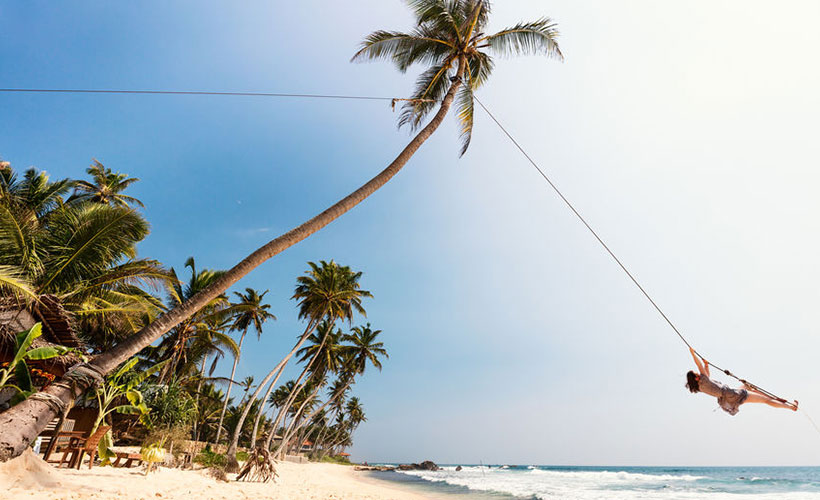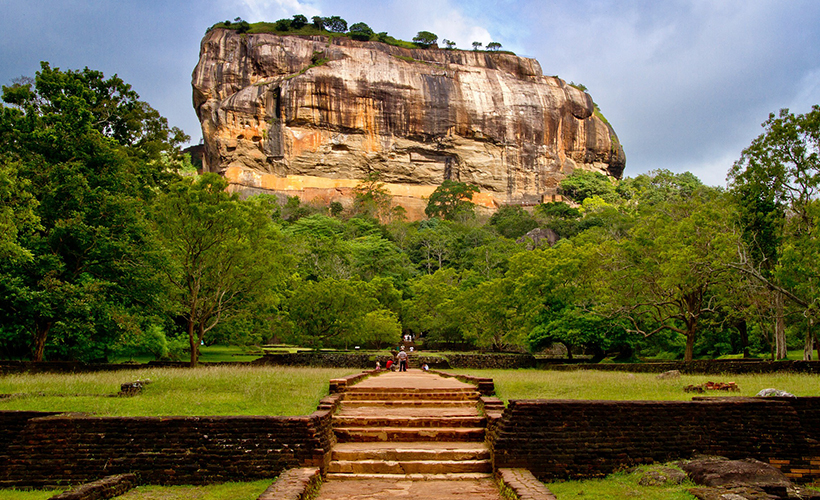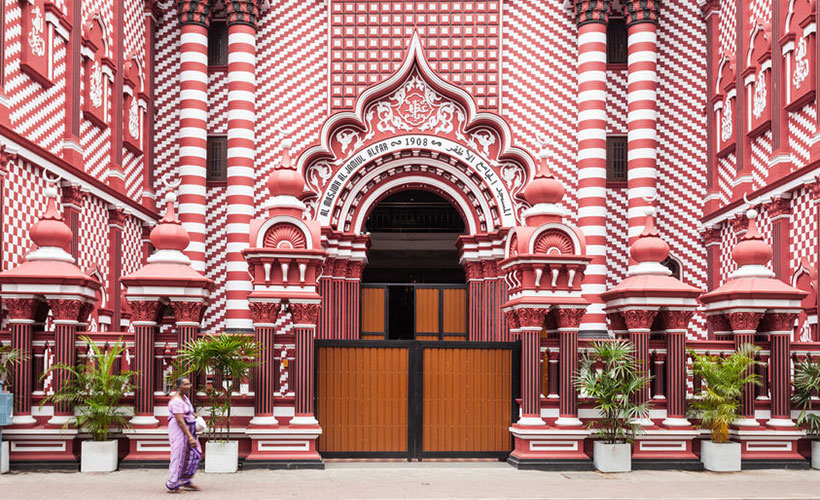
Although you won’t see it straight away, the unique architecture of Jami Ul-Alfar Masjid – more commonly known as The Red Mosque – in Colombo was inspired by the pomegranate. Covered in elaborate stripes and patterns created by red and white painted bricks, a candy cane probably comes to mind first. However, its rich rouge hues are definitely akin to the ruby juices of the pomegranate. The domes are even fashioned after the fruit. Pomegranate-like structures adorn the mosque instead of the more traditional onion-shaped domes.
The mosque is a combination of an eclectic architectural style. Complementing the red and white patterned stripes are checked blocks, jagged lines, and spirals. The colours, patterns, and architecture invite the eyes in to wander over each and every surface. The lines draw your view to ever more interesting spaces. The inside of the Jami Ul-Alfar Masjid reflects its exterior. Red and white tiles were refurbished to look like those used in the original construction.
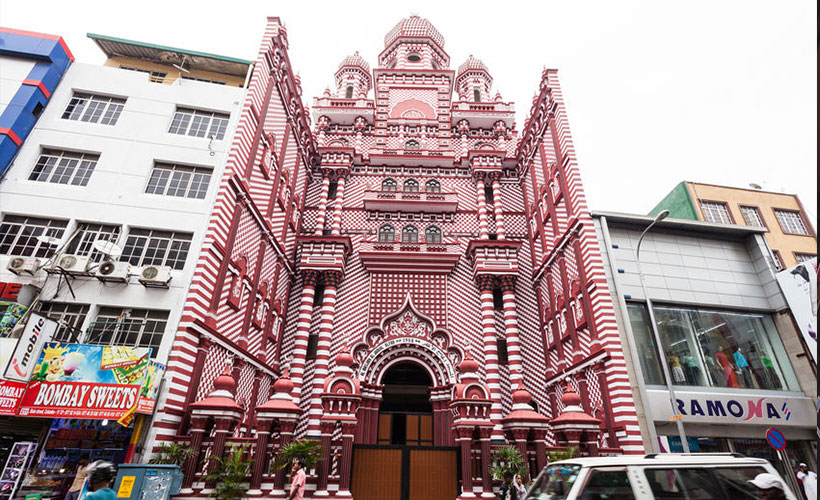
Originally, Jami Ul-Alfar Masjid had two storeys supported by four large teak tree columns and a clock tower. This can still be seen today. The mosque was designed by H.L Saibo Lebbe and constructed between 1908 and 1909. An Indo-Saracenic architectural style is what influenced Lebbe’s design, combining native Indo-Islamic and Indian architecture with that of the Gothic and Neo-Classical styles popular in Britain at the time. Along with the architect’s own touches, of course.
Jami Ul-Alfar (called Rathu Palliya in Sinhala and Samman Kottu Palli in Tamil) is a landmark in the Pettah district of Colombo in Sri Lanka. The tall minarets can be seen from nearly everywhere in the capital, and it’s even said that the mosque has been used as a landmark since 1908 by sailors as they approached the port of Colombo.
As the Muslim population in the area grew, the Haji Omar Trust obtained the adjacent properties. A four-storey wing was added on in 2007 to increase the capacity of the building to 10,000 worshippers, and updates and restorations are continuously made. The Red Mosque is the largest congregational building in Sri Lanka.
Places of worship all around the world are known for their divine craftsmanship and attention to detail:
Understanding The Stunning Art Of Thailand’s Temple, Mosques, & Churches
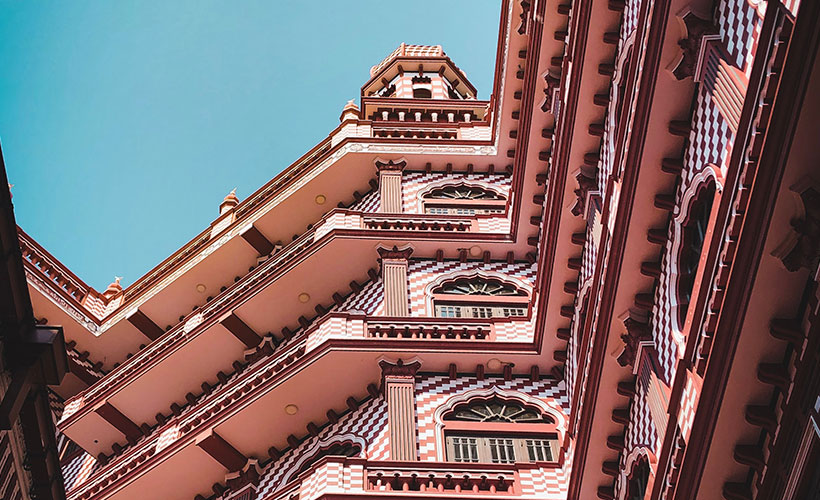
The surrounding streets are quite narrow and packed with shops selling just about everything that you can think of. Standing in front of the mosque, one has a strange feeling of ‘space’. The clear lines and red and white patterns create a feeling of calm and serenity that is in stark contrast to the cluttered and busy streets that envelope it.
Between 10 in the morning and 12 noon, tourists can enter the mosque to look around. Women are welcome to visit as long as their hair, arms, and legs are covered and they are respectful of religious customs. We recommend wearing a long skirt or loose trousers.

